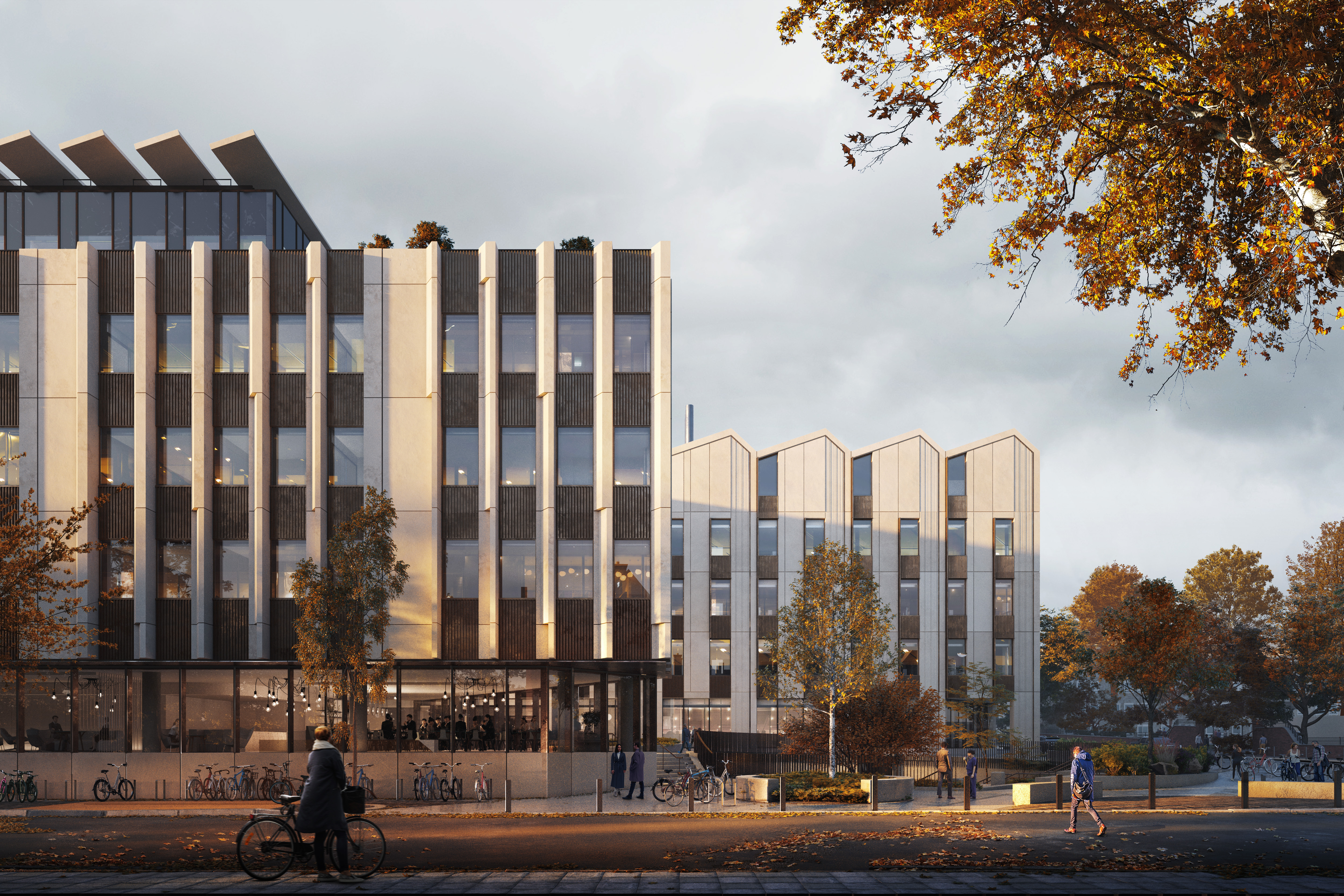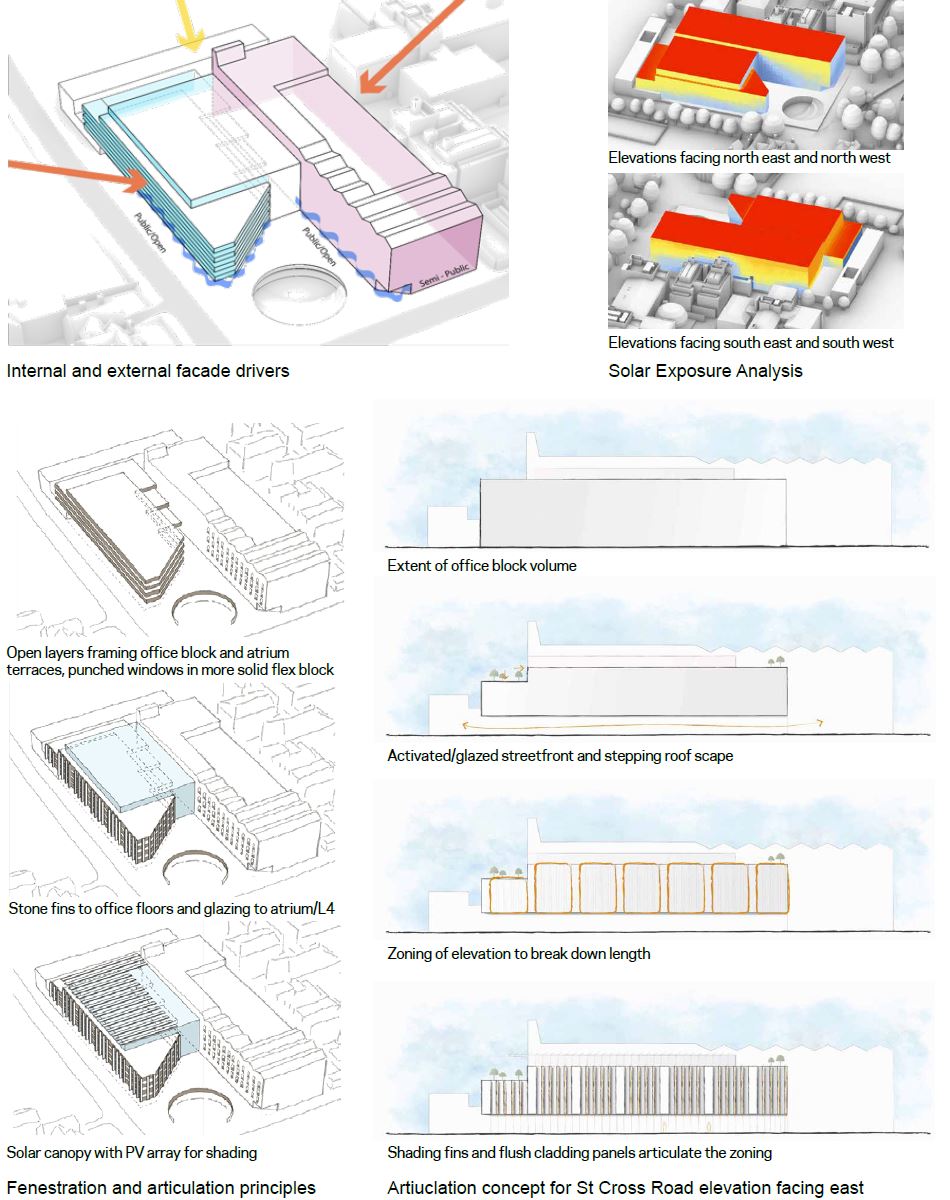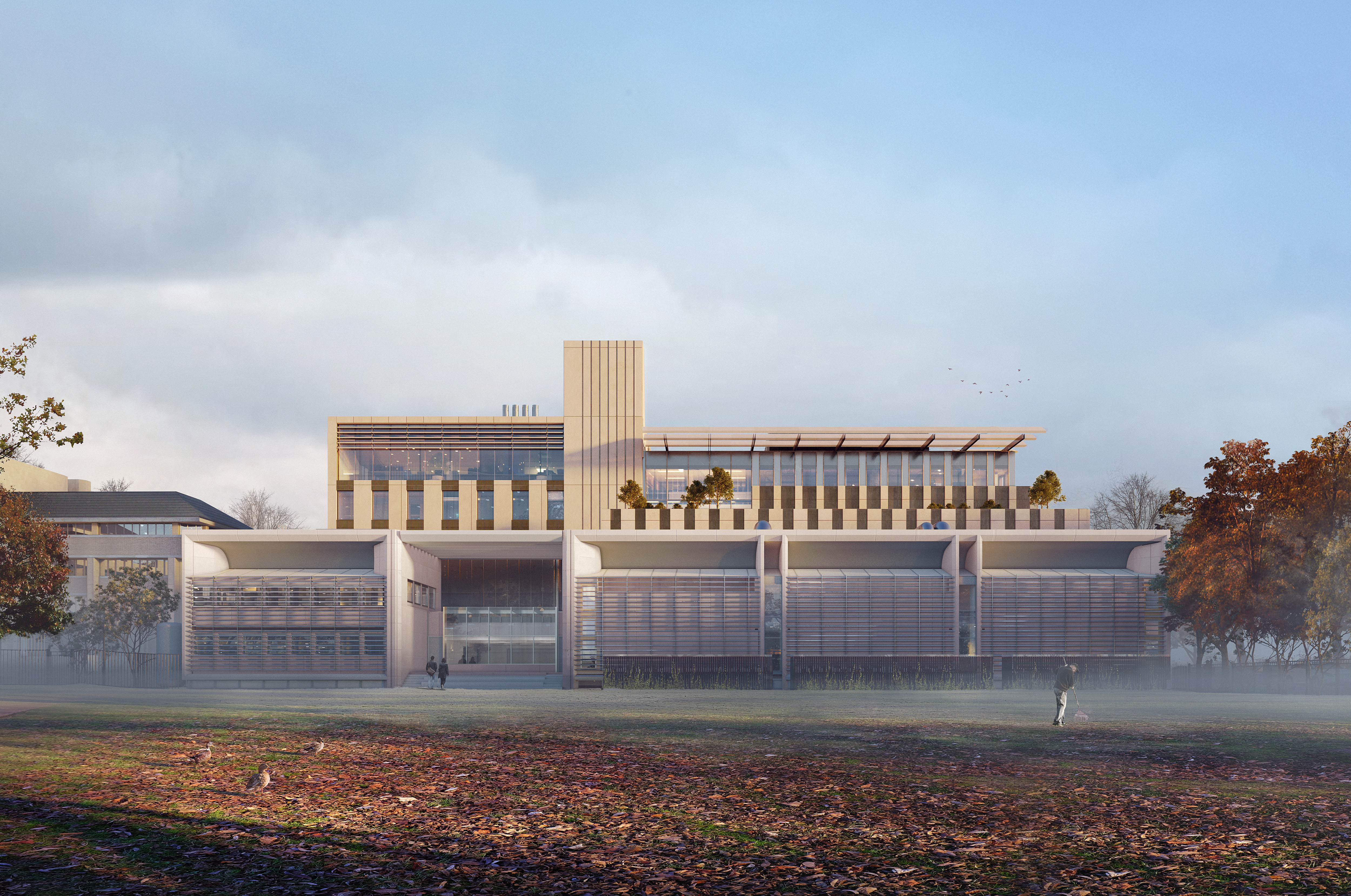Façade Concept
Consultation and Design Evolution
Frequent design reviews with stakeholders including planning officers as part of the pre-application process, two Oxford Design Review Panel workshops, and public consultation feedback informed the evolution of the façade design and helped add critical input and balance priorities within the overall vision.
As part of an iterative design process, in response to critique and suggestions by above parties, key areas of the project were refined and adjusted to develop initial proposals shared with those parties. Design aspects that received special attention include:
-
Roof articulation - role and shape of pitched roofs
-
Integration and location of roof level green houses
-
Relationship of office and flex block
-
Animation of façades through design elements expressing role and purpose of the facility, and the character of its external appearance.
-
Sculpted quality and articulation (depth) of façade aspects incl. window reveals, shading projections and cladding joints
-
Quality of materials and craft of details including long-term performance and contribution to the overall image of the Science area and Oxford.
The following sections describe the resulting proposed design and points out some of the main areas of the design refined in response to feedback.
Façade Design Drivers
The envelope strikes a balance between reacting to differing internal and external drivers like space type, orientation and context, while retaining a consistent material palette and elements of articulation to ensure recognisability and identity.
The flex block façade suites taller floor to floor heights and follows the standardised grid suitable for laboratory uses to be ready for future adaptation of the layouts through relocation of partitions. Glazing alternates with solid walls required to fix shelving.
The office façades are designed to maximise glazing for daylight and views, following a grid more suited for office furniture layouts.
The building is designed following PassivHaus principles. To make the building more energy efficient particular attention is given to the continuity of the thermal line and air tightness throughout the building envelope to avoid heat loss in winter and heat gain in summer. Building orientation and the ratio of glazing to solid has been informed by solar exposure and thermal studies to avoid overheating or heat loss through excessive glazing. Specification of triple glazed high performance windows and highly insulated solid walls are designed to help retain as much glass as possible to ensure good daylight and views for occupants.
The articulation and materiality of the façades and the roof profile of the proposed building are critical to help integrate it within the varied context of Oxford and the Science Area, and to assure a high performance design that is durable, timeless, adaptable and sustainable.
Facade Concepts
The two main building volumes, the 'flex block' and 'office block' are designed to support the massing concept of two individual volumes - complementing and in harmony with each other - helping to reduce the apparent scale of the large building.
Office Block
The stacked floor plates of the office building are expressed through profiled metal spandrel panels which continue the language of metal balustrades around the atrium slab edges and openings into the lower ground floor. Vertical bands of reconstituted stone overlay the expressed edges of the floor plates, but stop short below level 1 leaving the set back ground floor to be fully glazed to maximise interaction between inside and outside. The stone bands increase in depth along the east façade providing shading to manage glare in the morning avoiding reliance on internal blinds, while subtly evoking the repetitive use of buttresses along many college’s façades.
Flex Block
The flex block in contrast is expressed more grounded with vertical bands of windows structuring its reconstituted stone elevations following the inner laboratory module and adjusting the amount of glazing to suite the inner needs - more glazing at ground where public functions are located and less glazing at level 4 where technical facilities do not require windows. Spandrel panels in the flex block pick up the language of the office building but instead of expressing horizontal bands continuing behind the stone bands, here they are placed flush with the face of the façade in between of the reconstituted stone walls.
The south elevation continues the façade rhythm of the office and flex block at lower levels, while level 4 glazing to the café and atrium help highlight and articulate a new stone tower for the Oxford skyline, containing the relocated flues for the Chemistry Teaching Laboratory building.
Roof Line
The roof profile of the flex block is articulated with asymmetric gables and pitched roofs, terminating in the above mentioned tower. The pitched roofs and fourth floor accommodation cradle a row of greenhouses along the west south/west façade that will be visible from occasional vantage points towards the west of the building. Shape and lighting of the greenhouses is strongly driven by the functional needs of the research and it will be considered if black-out blinds are required at night to manage impact on long distance views.
To manage the visual impact of screened external service plant above the office block, and to shade east and south facing office accommodation, and to provide a base for photovoltaic panels, an expansive canopy formed of reconstituted stone planks (matching the façade) is proposed above level 4 and projecting towards the south. Its manifestation above the building volume takes the viewers’ attention away from the plant enclosure beyond and evokes parallels with the rhythm of spires along many of the college’s building frontages.
Consultation Feedback & Response
The proposals replace earlier studies which saw the flex block elevations feature less expressed and repetitive punched windows. The development was driven by feedback from planning officers and ODRP who suggested a more expressive facade and better relationship between the two building blocks. In line with the projects vision this allowed the two buildings to be tied together in appearance while articulating a unique and confident, more soaring appearance.

Architect's rendering of the Life and Mind Building's west facing façade.




